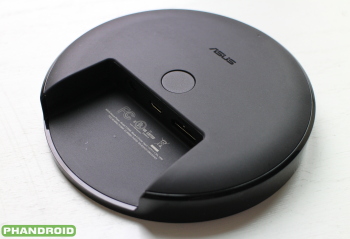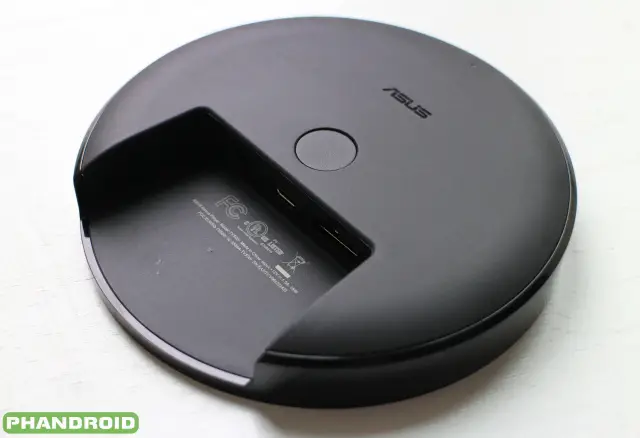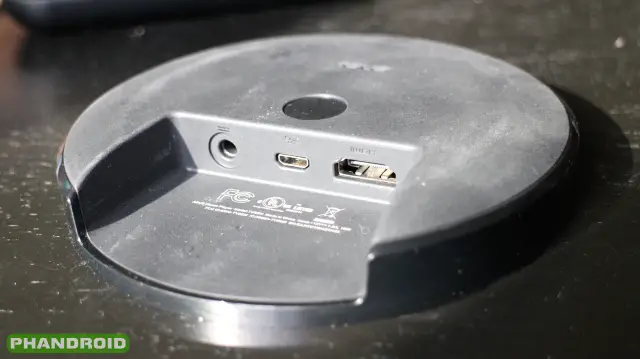
On using USB devices with the Nexus Player

Of the minimal connections Google’s Nexus Player does accommodate, one is a somewhat-mysterious Micro USB 2.0 port. The Android TV flagship’s landing page, Google’s help site, and documentation included in the box all mention the port but none really make any effort to tell the user what it is there for. Pushed on the issue, Google’s official stance is that the Micro USB connection exists as a service to developers — a way to interface with the Nexus Player to test and debug apps for Android TV.
In our full review of the Nexus Player, we took Google for their word and didn’t push the issue, neglecting to at least see if that Micro USB port was good for anything more. Acting on the tips of a few readers, we decided to delve deeper and see if the USB connection was strictly an option roped off for developers. Turns out it’s not…well sort of, anyway.
A note before attempting any of the processes below: In order to connect any USB peripheral to the Nexus Player you are obviously going to need the proper cables and adapters. At a bare minimum you will need a Micro USB (male) to USB (female) adapter. To connect multiple devices you will need some form of USB hub to interface with the single port on the Nexus Player.
Expanding strorage through USB

When considering the Micro USB port, the feature most users and potential buyers want is the ability to use it to add external storage in the form of a flash drive or other USB-connected storage. The Nexus Player, after all, only includes 8GB of internal drive space. The short answer: it does support external storage. But there is a bit more to it.
Android TV as a platform is not setup for plug-and-play secondary storage. It doesn’t include a native file browser to access content stored on an external drive. Now we have the issue of a connected, recognized USB drive but no way to actually access the drive’s content.
So the solution, you think, is to download a third-party file explorer to your Nexus Player/Android TV in order to access stored media. Here, though, is another roadblock: Google is far more restrictive of the apps that are available natively on Android TV than they are of apps on Android as a whole. Currently, no file explorers are approved for Android TV. You won’t find one ready and waiting in the Google Play Store when accessed on Android TV.
OK, so you’re still hell bent on getting this extra storage? You could sideload a third-party file explorer onto your Nexus Player, but sideloading apps on the Nexus Player is a chore compared to doing the same on a smartphone. Without a full web browser or built-in file sharing features, there really is no easy way to download apps from third-party sources directly to the device. You will need to use the Android Debug Bridge (ADB) to push apps from a USB-connected PC (a process that requires some intermediate knowledge of working with the Android platform at the system level).
Even then, sideloaded apps that are not approved for Android TV will not appear in your list of apps on the homescreen. You will have to go a layer deeper and install Chainfire’s Sideload Launcher to easily access sideloaded applications from the user-facing Android TV menu. After completing this entire process you should be able to access files, including music and video, stored on an external drive using a third-party file explorer — that is if the file explorer built for smaller touchscreen devices plays nice with the Nexus Player’s remote control inputs and television formatting.
Note: Some apps allow for installation to the Nexus Player from the browser version of the Google Play Store despite not officially supporting Android TV. When installing the app via Google Play on the web, you will be presented with the option to install to your Nexus Player. This is not the case with all apps, but is true for at least one unsupported app that makes the above process much easier: ES File Explorer. Once installed from the web, ES File Explorer won’t show in the main menu, but you can access it with the above mentioned app from Chainfire. Alternatively unsupported apps can be launched by navigating to Settings > Apps > Downloaded Apps.
With ES File Explorer installed, you can load apps onto your USB drive and sideload to your hearts content. [h/t to adammhaile]
Connecting to ethernet
A curious aspect of Android TV is that it only sports wireless network connectivity, or that’s what Google would have us believe. Again, we receive mixed messages. All official literature claims that the Nexus Player is WiFi-only, but buried in the settings menu under connectivity options are mentions of ethernet support despite the lack of an actual ethernet port.
In this case, Google is once again only providing half the story. The Nexus Player indeed supports a wired ethernet connection by way of the Micro USB port. A proper ethernet-to-USB adapter gets the job done, and, unlike external storage, it is as simple as plug-and-play. Connecting to ethernet via the Micro USB port, if we navigate back to the settings menu it should recognize the new wired network connection.
Using other USB peripherals
When it comes to other USB peripherals (mice and keyboards, possibly other gaming controllers), like ethernet things seem to again work on a plug-and-play basis. We can’t guarantee that every USB input device will work flawlessly with the Nexus Player, but we can confirm that at least some do.
If you’d rather navigate menus with a computer mouse and type search queries on a full keyboard, have at it. At the very worst, it won’t have any negative results to try if you so desire. The worse that will happen is that the Nexus Player will fail to detect your device.
***
Again, it is important to state that, as far as we know, Google never intended any of the above uses for the Micro USB port on the Nexus Player. Your mileage may vary and the information provided here is just that: information. Stick whatever you want into the USB port, but we can’t be held responsible should something brick or break.
Android is a wild world, man, and it’s good to know that even if Google doesn’t officially support certain features on the Nexus Player and Android TV, it hasn’t completely blocked users from exploring the possibilities hidden in something as simple as a Micro USB port. Let us know if you find any other uses for it!
